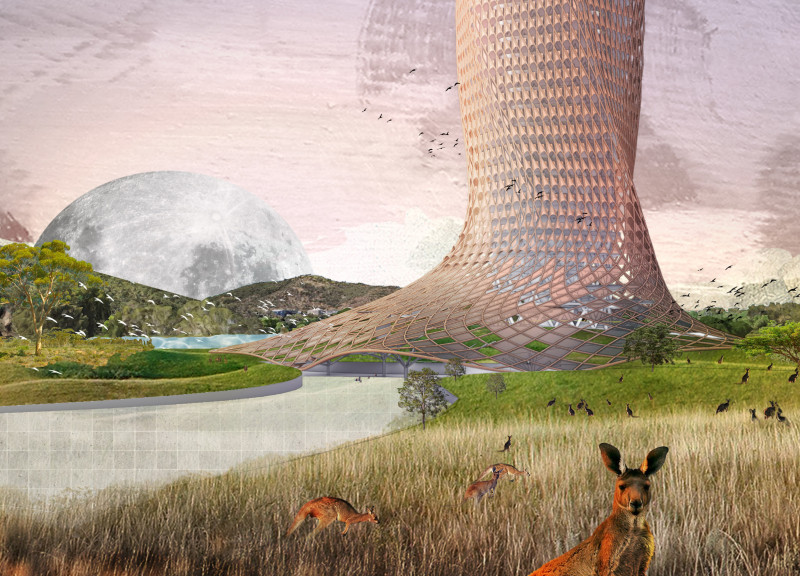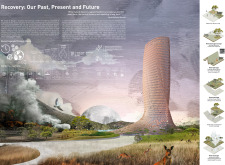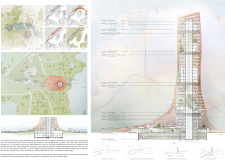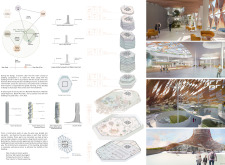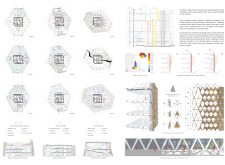5 key facts about this project
The recovery and research center in Canberra, Australia, is designed to address significant environmental issues stemming from climate change, notably the recent bushfires that have impacted local wildlife and ecosystems. The center aims to create a new connection between humans and nature through a vertical structure that combines ecological restoration with community involvement. This multifunctional building focuses on rehabilitating wildlife, supporting research, and raising public awareness about environmental conservation.
Architectural Concept
The design emphasizes a vertical tower that makes effective use of land while preserving the surrounding natural areas. By moving away from traditional zoo concepts and towards the idea of a wild park, the project showcases a commitment to biodiversity. The layout incorporates a recovery center for animals, research laboratories dedicated to plant growth, and public spaces that encourage education about ecological issues.
Vertical Integration
The tower’s vertical configuration accommodates various spaces, such as hotels, offices, and a restaurant with an observation area. This observation deck is equipped with systems to monitor fire risks, enhancing public safety while providing intriguing views of the natural landscape. The building’s design seeks to achieve a balance between urban functionality and ecological awareness, allowing for diverse uses without compromising the environment.
Community Engagement
The center fosters a sense of community by promoting social interaction and encouraging educational efforts related to climate change and conservation. Each area within the tower is thoughtfully planned to invite engagement with both the local ecosystem and urban life. A range of activities can occur within the space, from educational workshops to casual gatherings, making it a hub for community involvement.
Environmental Identity
The visual language of the tower reflects an awareness of ecological concerns and aims for sustainable urban development. While the presentation does not specify particular materials, it suggests that choices will align with the project’s ecological objectives. This approach establishes a new identity in Canberra’s urban framework, aiming to strengthen the bond between human structures and natural systems, particularly through its observable ecological initiatives and public engagement features.
The observation deck not only offers expansive views of the region but also incorporates technology to continuously monitor the environment, highlighting its role as a tool for public awareness and safety in the face of climate challenges.


